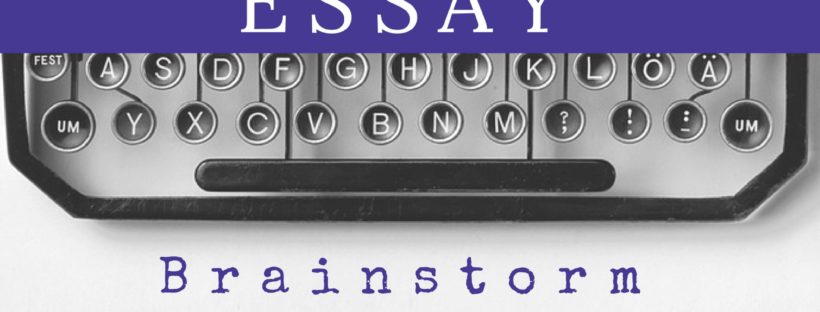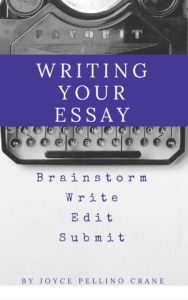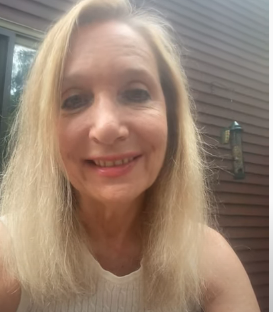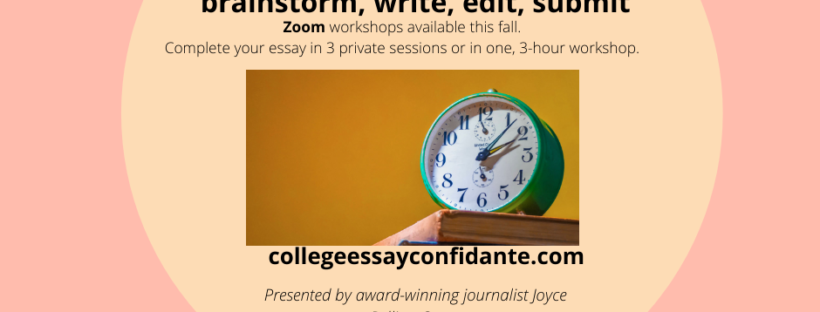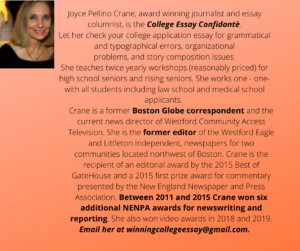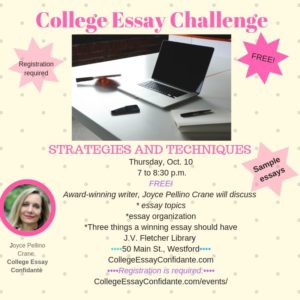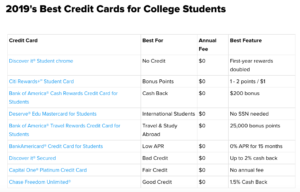Care to discuss these tips? I’ll be at the J.V. Fletcher Library , 50 Main St., Westford, on Thursday, Oct. 10 at 7 p.m. to answer your questions, help you find a topic, and show you a writing technique that works for the essay. I can be reached at winningcollegeessay@gmail.com.
Your college application essay can be the ticket to the college of your choice. The essay gives you a chance to differentiate yourself and highlight assets that don’t show up elsewhere on your college application. This is your chance to shine so give yourself the necessary time to make it the best it can be. Joyce Pellino Crane is the College Essay Confidantè. If you need help, email her at winningcollegeessay@gmail.com.
1. Focus! You’ve got a total of only 650 words for the essay. That’s the equivalent of slightly less than one single-spaced page. Cut to the chase and keep it simple. Zero in on a specific event or happenstance that illustrates you learned something, gained insight, matured, or progressed in some other way.
2. Avoid chronology. You don’t have the luxury of endless space. Too often, I’ve seen students write beautiful stories that start from some long-ago beginning. The essay grows to 1,200 words and now the writer is in trouble and the heart of the story must be cut. That’s a painful process and the essay inevitably turns into something unrecognizable to the author.
3. Mine your brain and everyone else’s. Finding a story topic that reflects something meaningful takes time and deep thought. The most effective process I’ve found for generating ideas is brainstorming. Bounce ideas off your family members and friends – look for people in your life who are deep thinkers, write for a living, or know you well. Each spring and summer I hold workshops for rising seniors for the sole purpose of getting to know them and helping them to know themselves. We sit around a conference table and share information. You’d be amazed at the stories the students have inside them without realizing it.
4. Use metaphors to depict life lessons. Show your readers what you want them to know about you instead of telling them. One student, who was planning to become a lawyer, started her second draft like this: “The girl on the bus was my best client. Whenever the driver reprimanded her, I would step up to her defense. That’s me, defender of the weak or the clueless.” Her first draft began like this: “In the second grade I decided that I was going to be the first women president of the United States. I wanted to be the President because I wanted to outlaw smoking, and I wanted to make shelters for black cats.” Do you see the difference?
5. Know your truth. This is the essence of all good essay writing. There is the external you and then there’s the internal you from which springs your emotions, beliefs, and philosophies. The most successful essays I’ve written have come from a scene or occurrence that stirred emotion inside me – an event or feeling I can’t forget. When you are compelled to write about a topic you will know you’ve found your truth. It’s the thing that makes you tick. It’s the stuff that makes your friends love you. It’s the engine that motivates you to reach further and try harder. Pay attention to your emotions and you’ll find that elusive topic.
6. Choose a topic that truly interests you. The Common Application has seven essay prompts. Look them over and decide whether you want to write a personal statement or if you’d prefer to make a persuasive argument. A personal story requires less research but more creativity. A persuasive story requires a lot of thought, research, and accuracy. Regardless of which, your story should stir passion or deep commitment in you. If it doesn’t, search for another topic because if your story doesn’t interest you, it won’t interest your readers and you will be forgotten in the pile of applicant rejects.
7. Just do it. There is no substitute for putting pen to paper (or fingers to keyboard). Every author will tell you that no book was ever written inside someone’s head. The process of writing helps you reach a deeper level of thinking. This is the area where your subconscious and conscious mind intersect – from where your best ideas gush. Like Dorothy and her red shoes, you have the means for going home, you just need someone to tell you how. Here’s how: write your first paragraph. Then write your second paragraph. Then your third and finally your fourth. Don’t worry about grammar, spelling or typographical mistakes. Don’t try to make it pretty. All of that can come later. For now, just get the story onto the page.
8. Use action verbs. The best writers eschew adjectives. If you do this, you’ll not only present a more vivid picture, but you’ll save space.
9. Revise! The process of revising and editing your essay will almost certainly spur insight that will improve your writing. Pay attention to grammar, syntax, and spelling.
10. Don’t force the ending. Remember when I said you want to find the intersection of your conscious and subconscious mind? That’s where your best conclusions come from, so if you don’t know how to end your story, turn off your brain for a while and let things percolate. Come back to the essay a day or two later and read it through. Sometimes the perfect ending will pop into your head and you’ll know you’ve nailed it.
11. Sculpt your essay. Now that you’ve got it in final format and you think it’s ready to submit, stop. This is when it’s time to see yourself as Michelangelo with the statue of David before you.
Chisel away. Scrutinize every sentence. Are there extra words that can be eliminated without changing the meaning of the sentence? Are you using precise language? Have you chosen the best words? Are there redundancies?
12. Envision your story as a circle. Envision your essay as a story that ends where it starts and travels around the page as it unfolds. A story with a powerful conclusion often refers back to the beginning but shows resolution and growth.
*********************************************
Joyce Pellino Crane is the College Essay Confidantè. She is the multimedia news director at Westford Community Access Television and the former editor of the Westford Eagle and Littleton Independent, two community newspapers in Massachusetts. Crane was a Boston Globe correspondent for 10 years and her commentaries have appeared on the Pulitzer Prize-winning paper’s opinion page. She is the recipient of numerous journalism awards including recognition for editorial writing.
